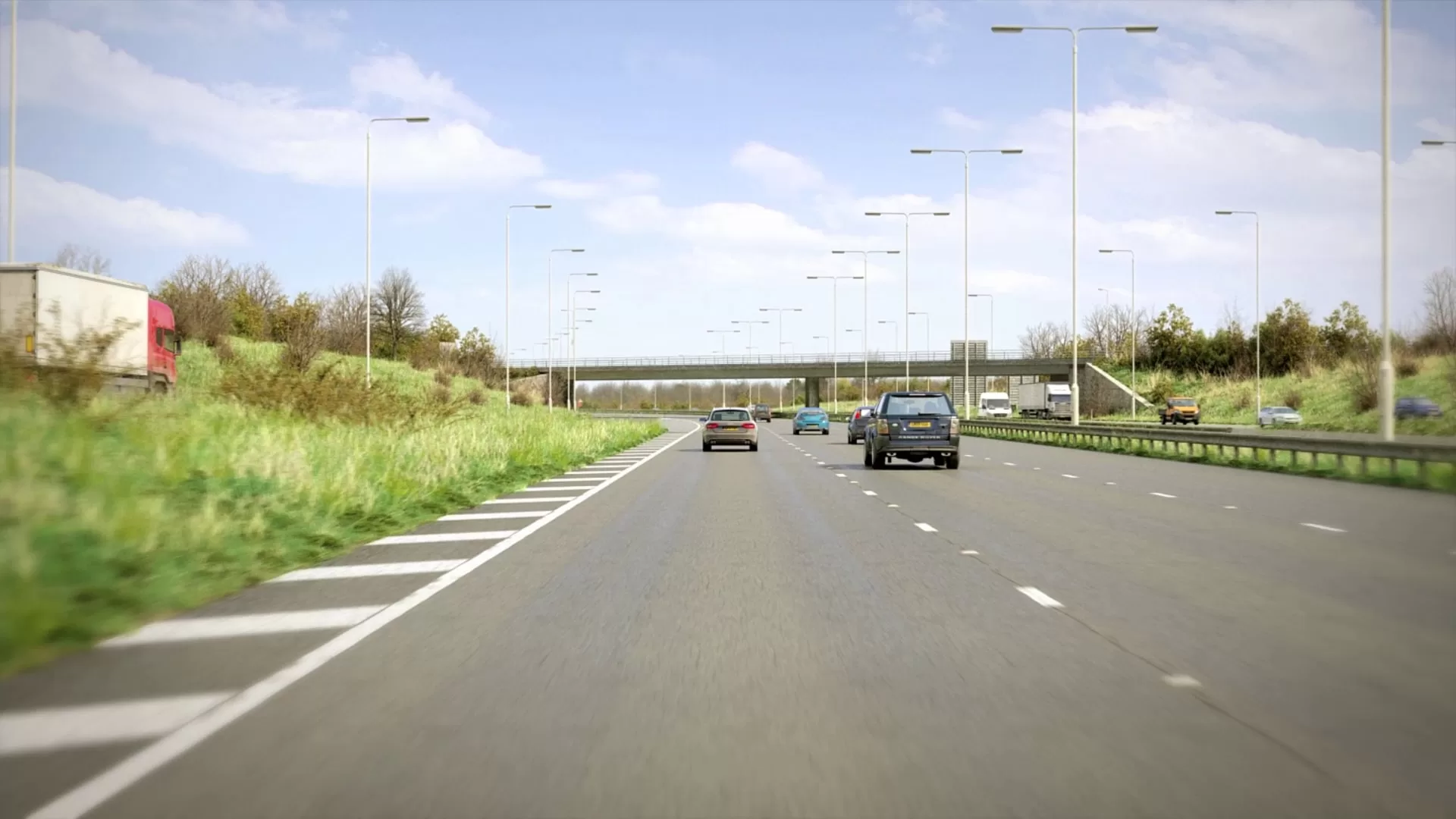The trio of practice clips has been exclusively provided to Sun Motors by the DVSA, which sets the test, to allow drivers to test their mettle against the fiendish quiz.
The footage features three simulated driving scenarios created by the agency.
Similar films form the basis of the hazard perception section of the theory test, on which a mark of at least 44 out of 75 is required to pass.
Every driver in the UK has to complete this exam before they are allowed to apply for a driving licence and a practical test.
To play along at home, pause the video each time you spot a hazard and make a note of the timestamp to work out your score.
What happens?
In the first simulation, you approach an elevated railway bridge with the road running underneath through a narrow tunnel.
Early on in the clip, a black car comes through the tunnel in the opposite direction.
A few seconds later, a grey car does the same followed by a white car as a train passes overhead.
The final motor reaches the tunnel just as you do, causing you to slow and allow them to pass.
In the second video, you are driving on a snow-covered road with cars parked on the right-hand side.
Up ahead, there is a lane connecting to the route you’re on via a T-junction.
A car can clearly be seen travelling along this lane before turning onto the main road.
As it does so, the back end slides out due to the slippery conditions, resulting in a small skid.
Then, as you approach the junction, a white van comes through and turns onto the road to face you, partially blocking your progress.
Finally, in the third segment, you are travelling along a busy three-lane motorway with traffic ahead.
As you progress down the road a fourth lane on your left, representing a junction entering the carriageway, comes into view.
A lorry then appears on this junction and joins the road from it.
Within a few moments, though, the road merges down to three lanes again as the fourth lane transitions into the hard shoulder.
As that becomes visible, the lorry begins to indicate and pulls into your lane, forcing you to slow down.
What should you have spotted?
Each clip contained one hazard that drivers would have been expected to identify within a certain timeframe to pass.
The DVSA allows a window of between five and ten seconds to pick up the danger, with up to five points awarded depending on how early you identify it.
For the first video, as soon as the white car becomes visible, drivers should recognise that it presents a hazard.
This is because the presence of the car on the narrow lane will force you to slow down or risk a collision.
In the second example, top marks are awarded for spotting the van as it approaches the junction.
To make it harder, many might have been distracted by the silver car ahead suffering a skid and, therefore, had their focus drawn away from the van.
Finally, once it becomes clear that the motorway lanes are merging, the lorry to your left becomes a hazard as it will have to pull out in front of you to merge while maintaining constant speed.
What’s your score?
The table below explains how many points are awarded based on when you spotted the hazard, based on timestamps in the film above.
| Points | Clip 1 | Clip 2 | Clip 3 |
| 5 | 20s | 1min 17s | 2min 4s |
| 4 | 22s | 1min 20s | 2min 13s |
| 3 | 23s | 1min 22s | 2min 17s |
| 2 | 24s | 1min 24s | 2min 22s |
| 1 | 25s | 1min 26s | 2min 25s |
Only top-notch drivers will rack up the full 15 points while 12 or above indicates an excellent motoring IQ.
Getting above nine will see you scrape a pass but anything below is a fail.







